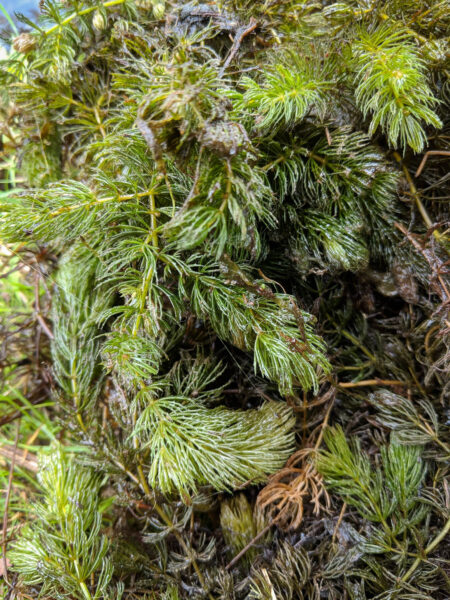Coontail
Ceratophyllum demersum
Coontail is a bushy-looking underwater grass with whorls of stiff, forked leaves along densely branched stems. It grows mostly in quiet freshwater areas such as the upper Chesapeake Bay and rivers, streams, lakes and ponds throughout the Bay watershed.

